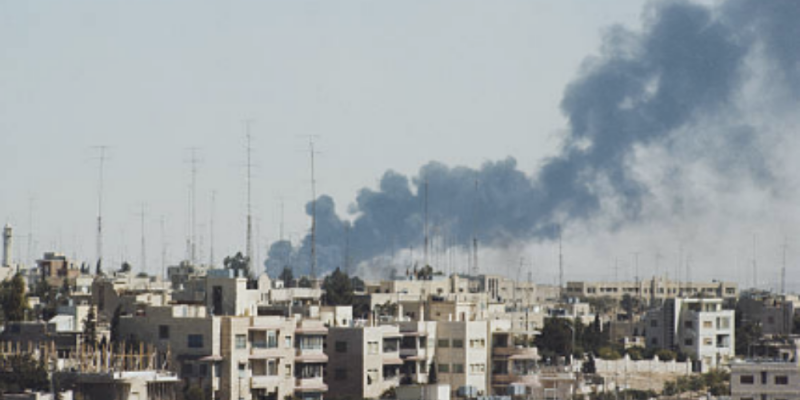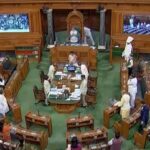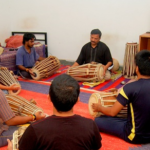A more insensitive and ill-informed date and week than September 15 could not have been chosen by Washington and its Arab satraps in Abu Dhabi and Manama to sign the declaration that would agree to recognise Israel. For this week not only marks the 38th anniversary of the infamous Sabra and Shatila massacres in the Palestinian refugee camps of Beirut which initiated the Israeli invasion of Lebanon, but also the 50th anniversary of the Black September massacre in Amman, which began on September 17, paving the way for the exodus of Yasser Arafat’s Palestine Liberation Organisation (PLO) to Beirut and the gradual attrition of the Palestinian resistance.
To begin to look at how the Palestinian liberation movement organically evolved from peasants to revolutionaries, and from resistance in the last century to collaboration and compromise in our own time, one needs to look at the 1967 Arab-Israeli War. This war, orchestrated by the United States and delivered by Israel, broke the back of secular Arab nationalism exemplified by the Egyptian leader Gamal Abdel Nasser, and led to two radicalisations within the Arab world: the radicalisation of the Arab Left exemplified by the emergence of a distinct Palestinian movement and the declaration of the first – and only – Marxist republic in south Yemen in 1967 after the withdrawal of the British; and the rise of right-wing Saudi expansionism fed by Saudi petrodollars.
The Palestinian movement came into its own after 1967 because it reached the conclusion that various Arab regimes had been using it for their own ends prior to that period, and it could fare much better on its own supported by friendly anti-imperialist and anti-Zionist Arab regimes. So Yasser Arafat rose in prestige after the Palestinian irregulars under his command inflicted stupendous casualties against their mightier Israeli aggressors in March 1968 at the Battle of Karameh, following which Arafat was elected as the chairman of the PLO in 1969.

King Hussein after checking an abandoned Israeli tank on March 21, 1968 during the Battle of Karameh. Photo: Wikimedia Commons
This was the time when the Marxist Popular Front for the Liberation of Palestine (PFLP) came into being and would later on achieve a cult status within the Third World and a terrorist one without for their spectacular plane hijackings across the world. This was also the period when Israeli Prime Minister Golda Meir had infamously said, “There is no such thing as a Palestinian people.” So for the Palestinians the challenge was dual: to prove their identity as well as their independence.
Israel’s capture of the West Bank in the 1967 war meant that Palestinians swelled into tiny Jordan altering the demographic balance; which in turn meant that the only way King Hussein could remain the head of an artificially-carved country was to rely on imperialism and Israeli colonialism (this hitherto has been the fate of the two other artificially created Arab states in the region, Kuwait and to a greater extent, Lebanon).
Also read: Palestine: The Madness of Netanyahu’s Annexation Plan
The class contradictions between the Palestinian guerrillas and the Jordanian monarchy came to a head in the beginning of July 1970; there were massive rallies on the streets of Amman which did not even spare Nasser, who had accepted the Rogers Plan a month earlier, which was seen as a betrayal of the Palestinian resistance. On his side, Nasser had also been careful in dealing with the Palestinian resistance, not allowing it to launch any attacks against Israel from Egyptian soil without prior coordination and control.
Another factor which precipitated the eventual confrontation between the Palestinian guerrillas and the Hashemite monarchy in Jordan was the policy of hijacking of Israeli and Western airplanes across the world by the PFLP from the first week of September 1970. The architect of this tactic of ‘revolutionary violence’ was one of PFLP’s co-founders, Wadi Haddad. It may seem a contradiction in terms for a Marxist-Leninist group to be espousing a seemingly-adventurist tactic short of armed struggle; but these should now be seen in the context of the relative invisibility of the Palestinian struggle from the consciences of a Europe and North America ridden with guilt over their failure to prevent the Judaeocide in Nazi Germany.
The spectacularly daring acts of the PFLP won it – and the Palestinian cause – world attention, but it also led to the beginning of the final confrontation between the Jordanian monarchy and the Palestinian resistance, which had now begun to openly call for the overthrow of the former.

Fighters of the Popular Front for the Liberation of Palestine (PFLP) in Jordan, early 1969. Photo: Wikimedia Commons
A military cabinet was appointed in Amman on September 16 and the Jordanian government deployed the army in Amman; there were street battles between the army and Palestinian guerrillas. The fighting lasted from September 17 until September 27. It is believed that anywhere from 4,000 to 10,000 people were killed in the ten days of the conflict, mostly civilians caught in urban warfare. Iraqi forces, though stationed in Jordan, did not intervene, since their justification was that they had been stationed there after the Arab-Israeli war to protect the Palestinians against Israel.
Damascus tried to intervene on the side of the Palestinians, but did not provide air cover to the advancing Syrian troops. King Hussein had even requested Israeli assistance but then he used his own airforce; and Hafez al-Assad, the Syrian airforce commander, had to stand down his own airforce. Various theories are proffered for Assad’s actions: his internal power struggles within the Syrian Baathist apparatus; his relationship with the Jordanian king; as well as threats originating from the United States and Israel regarding Syrian involvement.
Even a then-obscure Pakistani brigadier bearing the uplifting name of Zia-ul-Haq performed yeoman’s service for King Hussein by blatantly violating the terms of his secondment to the Jordanian army by taking part in the massacre – undoubtedly valuable match practice for what he was to wreak in his native country just seven years later as its worst military dictator.
Also read: Ein Rashash: A Typical West Bank Morning Under Illegal Israeli Occupation
The hapless Arafat was whisked to Cairo in Kuwaiti robes thanks to the intervention of Sheikh Saad, the Kuwaiti interior and defence minister. On September 27, a ceasefire between Arafat and King Hussein brokered by Nasser was agreed in Cairo. Nasser passed away the following day.
The Pakistani resistance poet Habib Jalib wrote a few years later in his elegy titled Yazeed Se Hain Nabrad-Aazma Falasteeni (The Palestinians Confront Yazeed) about the plight of Palestinians in Beirut but he could have been writing the same for the massacre in Amman:
‘Hua Labnan main voh hashar bapaa
Zameen khoon-e-shaheedaan se hai rangeen
Shayookh-o-shah ko samjho na paasbaan-e-haram
Yeh bandagaan-e-zaro-o-seem hain khuda ki qasam
Shayookh-o-shah toa hain khud shareek-e-zulm-o-sitam
Shayookh-o-shah se rakh na kuch umeed-e-karam
Emir kaise na Washington ke saath rahen
Inhi ke dam se hain saari imaarten hamdam
Yeh maangte hain duaen baraye Israel
Israel se hain baadshahaten qaim
Gharz inhen toa faqat apne takht-o-taaj se hai
Inhen shaheed Falasteeniyon ka kyun ho gham’
(Such a commotion in Lebanon occurred
With the blood of martyrs, the earth is coloured
Consider not the guardians of the sacred mosque to be the sheikhs and the lord
They are slaves of gold and silver by God
The sheikhs and the shahs are themselves participants in the cruelty and oppression
Do not expect from them any hope for compassion
How could the emirs not support Washington
Friend, because of it exists their dominion
They pray for Israel
In that it preserves their kingdoms, they feel
In short, their only interest is their throne and crown
Why should the Palestinian martyrs elicit their frown.)
The destruction of the Palestinian resistance in Amman forced it to relocate to Beirut; whereas in Jordan sporadic attacks on the remainders of the resistance continued until July of the following year. Many remaining Palestinians preferred handing themselves over to Israelis rather than rot in Jordanian jails. The Palestinians were now a broken movement in search of a sanctuary.
But as in Jordan, likewise in Lebanon they became willy-nilly a part of the fractures of a sectarian artificial state, now in thrall to Riyadh and Damascus, and then to Tel Aviv. Prior to another September massacre in Beirut in the refugee camps of Sabra and Shatila more than decade after their Amman exodus, the Palestinians decamped to Tunis, most of their leadership exiled and away from the hopes and travails of the people they claimed to represent.
Black September was the beginning of a template which saw the gradual attrition and destruction of the Palestinian resistance, which itself began to split into rival and rogue terrorist groups, supported and/or controlled by any number of Arab states. One group taking its name after Black September descended into wanton terror, not even sparing Israeli civilians or athletes.
As Israel’s clout in the Middle East grew on one hand, and Saudi influence on the other, any Arab leader or politician considered sympathetic to Palestine and inimical to Zionist interests was assassinated or overthrown. Nasser’s death left a huge vacuum, which could have been filled by the charismatic Moroccan politician Mahdi Ben Barka, who was disappeared on the streets of Paris with the complicity of Israeli commandos in 1965, five years prior to Black September; in Syria, the champion of Palestinian people’s militias Salah Jadid was overthrown by his erstwhile comrade Hafez al-Assad just a couple of months after Black September; in Tunisia, which was among the first Arab states to establish diplomatic relations with Israel, the charismatic rival of Habib Bourguiba, Salah ben Youssef was assassinated in 1961, while inside Bourguiba’s own Destour Party, the socialist direction of the Party under Ahmed ben Salah was neutralised with Salah’s expulsion and subsequent trial in 1970.
Also read: The Last Days of Al-Khan al-Ahmar, Palestine
What of the Palestinians themselves? Some of Arafat’s most capable comrades were picked out and assassinated by Israel one by one. Abu Ali Iyad, one of the most capable Palestinian commanders in the events of Black September was killed in Jordanian prisons in 1971, while Salah Khalaf, one of the historic founders of the PLO was believed to be killed by a rogue Palestinian terrorist group Abu Nidal in Tunis in 1991; the rest were all take out by Israel, undoubtedly with the complicity of the host countries: the flamboyant ‘Red Prince’ Ali Hassan Salameh and the PFLP’s Ghassan Kanafani – ‘the commando who never fired a gun’ – in Beirut in 1971 and 1979 respectively, both yet not even 40; Abu Jihad, the greatest Palestinian tactician of the Palestinian struggle, was ambushed and assassinated in Tunis in 1988; Abu Ali Mustafa, the Secretary-General of the PFLP in Al-Bireh in 2001.

PLO leaders Yasser Arafat, Nayef Hawatmeh and Kamal Nasser speaking at a press conference in Amman after the June events, 1970. Photo: Wikimedia Commons
In the midst of such a stultifying climate, made worse by the surrender of mighty Egypt and tiny Jordan to humiliating peace treaties with Israel in 1979 and 1994 respectively, a beleaguered Arafat had no option but to sign the Oslo Accords in 1994, which imposed a bantustan model on Palestine, policed by Israel, with the Palestinian Authority (PA) created by it increasingly resembling an NGO at best – bloated by the copious amounts of aid which began to flow in – and a replica of the various Arab one-party states at worst, which had put paid to Palestinian dreams repeatedly, and which unravelled in the ‘Arab Spring’ uprisings of 2011.
The first intifada which began spontaneously in December 1987 in the Occupied Territories was as much a response to the widespread excesses of Israeli occupation, as to Arafat’s perceived corruption; however instead of really building a grassroots initiative, he went ahead and signed the Oslo Accords. Had activists like Marwan Barghouti and Ahmad Saadat (both of whom are at present in Israeli jails) been allowed to represent their people, such capitulation to and collaboration with Israel might have been avoided.
Another chance at taking the Palestinian resistance in another direction emerged 20 years ago this month, when the Al-Aqsa intifada broke out spontaneously, ostensibly directed against a renewed round of negotiations between Israel and the PLO. The death of Arafat at the height of this second uprising in 2004 marked an end to the dominance of an icon, who for all his warts and corruption, was the undisputed leader of Palestine while he was alive. Following his death, the movement split following new presidential elections, with Hamas controlling Gaza and the PA controlling the rest.
As Jalib had presciently foretold in his poem nearly four decades ago, the notion that the United Arab Emirates and Bahrain are signing normalisation deals with Israel for peace is risible; their purpose is solely their own self-preservation, with Saudi Arabia, Morocco, Oman, Sudan and the two remaining petrol stations of the Gulf, namely Qatar and Kuwait possibly in tow. Just like Nasser’s Egypt in the 1950s, 1960s and 1970s, the aim now is to target and surround Iran, if not by outright invasion, then by Israel’s recognition. Turkey, which was the first Muslim country to recognise Israel in 1949, makes noises about Palestine now and then, but it will not break off diplomatic relations with Israel over such a trifle; far better to call for the overthrow of the rulers in neighbouring Damascus.
As Gaza suffers an Israeli-imposed blockade since 2007 and continues to be pounded by Israeli jets as I write this, from the 50-year-old journey which Palestinians have travelled from Black September in Amman to the multiple defeats of the present, there is a need to summon the same great spirit of determination which energized the First and Second Intifadas, and which may yet aid them to realize the unfulfilled dream and mission which the great Urdu poet Ibne Insha had mused about half a century ago in his poem Deevaar-e-Girya (The Wailing Wall) post-June 1967:
‘Ya Akhi! Ya Akhi!
Aa ke in qatilon, vahshiyon, mujrimon
Ghasibon, aur in sab ke aaqaon ko
Voh jo sone ke bacchdon ki pooja karen
Saat sagar ke us paar se jo sada
Taar saazish ke bethe hilaaya karen
Sari duniya main aashob laaya karen
In ke apne gunahon ke sang-e-giraan
Kar ke zeb gulu
Aaj Aqba ki khaadi main gharqaab kar den.
Taake Amman-o-Makka bhi mahfooz hon
Taake Lahore-o-Dhaka bhi mahfooz hon
Taake aur ahl-e-duniya bhi mahfooz hon.
Aur phir in ke pasmaandagaan ke liye
Aik deevaar-e-girya banayen kaheen
Jis pe mil ke yeh aansoo bahayen kaheen!
(O brothers! O brothers!
Come that these savages, criminals, murderers
Usurpers, and those who are their masters
Those who worship the golden calves
Who forever from across the seven seas
Shake the threads of conspiracies
Within the whole world they bring afflictions
The heavy stones of their own sins
By adorning the neck
Today in the Gulf of Aqaba we will wreck.
So that there is safety too in Amman and Mecca
So that there is safety too in Lahore and Dhaka
So that for the other people of the world too there is shelter.
And then for their survivors
Build a wailing wall somewhere
Upon which they can shed tears together!)
All translations from Urdu are by the author.
Raza Naeem is a social scientist and an award-winning translator currently based in Lahore. He has been trained in political economy from the University of Leeds in the UK and in Middle Eastern history and anthropology from the University of Arkansas at Fayetteville, USA. He is also the president of the Progressive Writers Association (PWA) in Lahore. He may be reached at razanaeem@hotmail.com.




